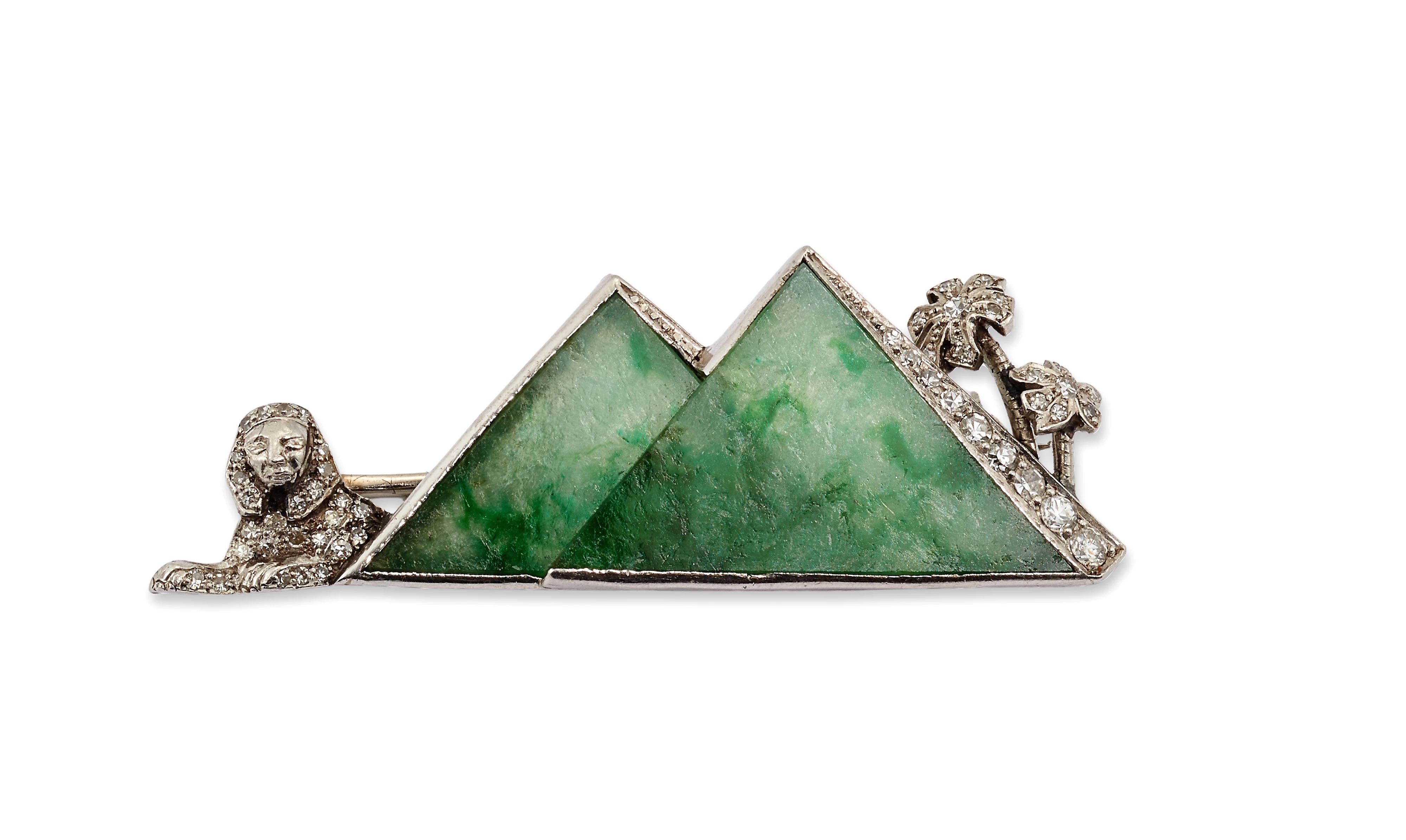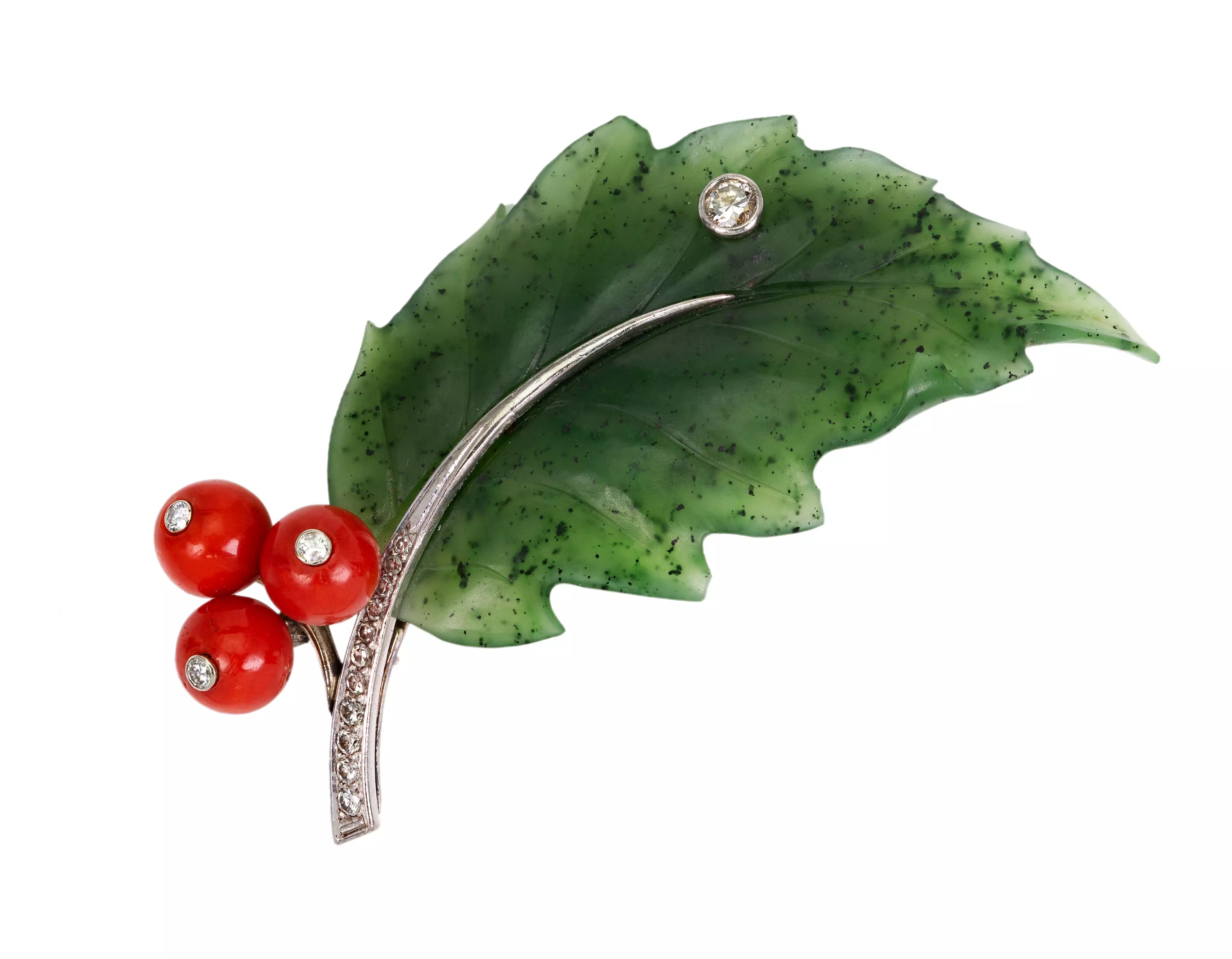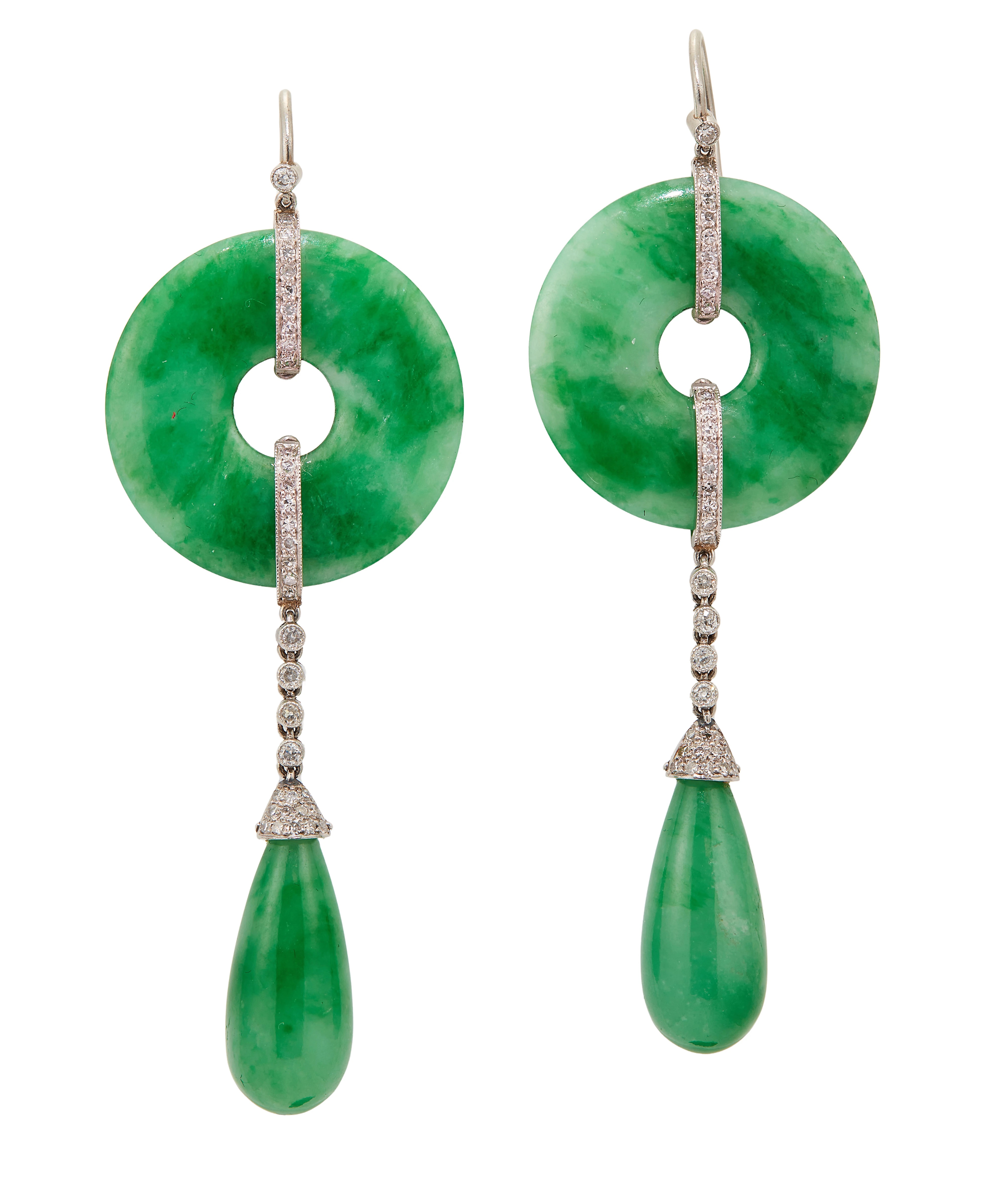Jade as a stone for adornment has been coveted for thousands of years, with its use dating back to neolithic times. The word ‘jade’ itself, coming from the Spanish ‘Piedra de ijada’, roughly meaning ‘stone for the pain in the side’, originating from the Aztec and Mayan beliefs in the stone’s healing properties. Historically, ‘jade’ referred to a plethora of green stones. It wasn’t until the 1850s that minerologists defined jade as two different rocks: jadeite jade and nephrite jade.
Lot 573: An Art Deco Egyptian revival jadeite jade and diamond brooch
Estimate: £3,000 - £5,000
Nephrite Jade
Nephrite jade is a rock comprised of fibrous interlocking minerals (primarily amphiboles). Although it is not notably hard, it is an extremely tough stone. This property was identified by early cultures, leading to its widespread use in carvings and weaponry. Nephrite is commonly seen in green and dark green colours, but can also come in browns, yellows, and whites, often with a speckled appearance.
The oldest records of jade (or Yu, 玉) in China were often nephrite jade, as it traditionally was viewed as more valuable. The white ‘mutton fat’ nephrite jade was regarded as the most valuable and was solely reserved for the emperor. The best quality nephrite jade was known to come from Hetian (Hotan), where the majority of ‘mutton fat’ jade is sourced. If such ‘mutton fat’ nephrite jades are well carved, and hold historical provenance, they command a premium on the market.
The Māori people of New Zealand also placed sacred importance on nephrite jade, although their word for jade (‘Pounamu’) refers to several green stones found in the area, including serpentine/bowenite.
Today, a large amount of nephrite jade is sourced from Canada, which notably exports a lot of ‘Chinese inspired’ nephrite carving. In 2000, the worlds largest jade boulder (nicknamed the ‘Polar Pride’) was discovered in British Columbia, weighing 18 tonnes.
Lot 212: A nephrite coral and diamond brooch
Price Realised: £2,340
Jadeite Jade
Jadeite jade is a rock comprising primarily of the mineral jadeite (although there is often a lot more mineralogical variation compared to nephrite jade). It wasn’t until the 1700s that China began importing jadeite jade from Burma (now Myanmar) and using it alongside nephrite for carvings and adornment due to its toughness.
Jadeite jade can be found in a wider range of colours than nephrite, the most popular of which being a bright ‘apple’ green. Lavender jadeite jade pieces are also very collectable, and if natural in colour, can command higher prices. Other colours include red, orange, yellow, brown, white, black, and grey. The wider range of colours jadeite jade had to offer is likely one of the reasons jadeite jade eventually became the more popular of the two jades.
Jadeite jade was equally coveted in many other cultures, namely pre-Hispanic Meso-America, where it was regarded as a sacred stone and used for carvings and adornment.
Lot 552: An early 20th century 18ct gold jadeite jade panel bracelet, the carved jade panels depicting birds amidst flowers and foliage
Estimate: £7,000 - £9,000
Jadeite Jade Grading
Jadeite jade is commonly treated, meaning its often worth having pieces believed to be high quality sent to gemmological labs for analysis. Such labs will often give the jade a grading of either ‘type A’, ‘type B’, ‘type C’, or type B+C’. These gradings mean the following:
Type A – The jadeite jade is untreatred.
Type B – The jadeite jade has been bleached to remove inclusions such as iron staining within the stone, and/or impregnated with resin to improve stability of lower grade stones.
Type C – The jadeite jade has been dyed to improve the colour of the stone
Type B+C – The stone has been bleached and/or resin impregnated, and also dyed.
The best quality jadeite jade displays a watery translucency, is often the aforementioned ‘apple green’ colour, and is graded ‘type A’.
Lot 575: A pair of Art Deco platinum jadeite jade and diamond drop earrings, each with a jade bi disc
Estimate: £10,000 - £15,000
Jade imitations
Since jade was used across so many cultures pre-dating modern mineralogical understanding, there are many green stones that fell under the jade umbrella that wouldn’t be considered jade today. Many such stones still get sold under misnomers that imply they are jade, when they are not.
The most common of these is serpentine, often the variety bowenite. These stones are often sold as ‘new jade’ and can most easily be distinguished by its more yellowy-green hue, white mottling, and inferior toughness.
Another common imitation is aventurine, a mica bearing quartz that often comes in a similar green colour. The most obvious identifying feature in this case is the stones ‘aventuresence’ or glittery interior, caused by the tiny mica crystals within the stone catching the light. Aventurine is similarly not as tough as jade, and has a more vitreous lustre.
‘Transvaal jade’ or ‘South African jade’ is a misnomer in the crystal world that refers to green hydrogrossular garnet. Carvings of this stone tend to be more rudimentary, appear more splintery, and have more of a waxy lustre. Once more, it is of an inferior toughness.
Paste (glass) often imitates jade, but again, is significantly less tough than jade, and commonly displays internal ‘swirling’ patterns and gas bubbles under magnification.








